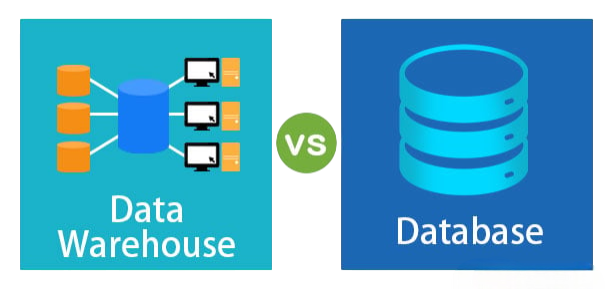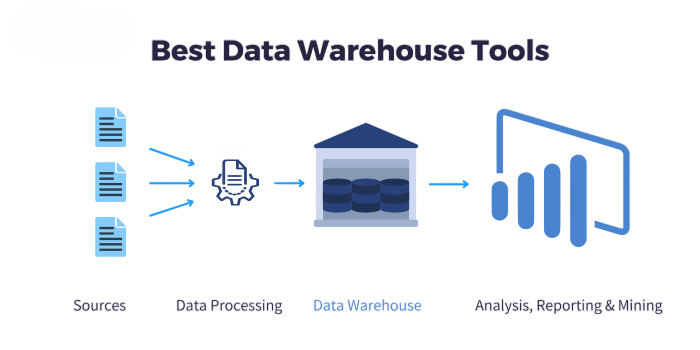
- What is Data Warehousing?
- Components of a Data Warehouse
- Data Warehouse vs Database
- Star Schema and Snowflake Schema
- OLAP vs OLTP
- Data Marts and Aggregation
- Tools Used in Data Warehousing
- Data Warehouse Architecture
- Data Quality and Governance
- Conclusion
What is Data Warehousing?
Data warehousing refers to the process of collecting, integrating, and storing data from different sources in a centralized repository to support business decision-making, analytics, and reporting. Unlike operational databases designed for day-to-day transactions, a data warehouse is optimized for complex queries, aggregations, and historical analysis. It serves as the backbone for business intelligence (BI) systems, enabling organizations, through Data Science Training to derive actionable insights from vast datasets. Data warehousing systems are designed to provide a consolidated view of the organization’s data by integrating information from different departments and formats. This unified view enhances decision-making, boosts productivity, and streamlines operations by offering reliable and consistent data.
Components of a Data Warehouse
- Data Sources: Originate from internal systems (CRM, ERP) and external systems (web logs, market data).
- ETL Process: Responsible for extracting, transforming, and loading data into the warehouse.
- Staging Area: A temporary environment where data is cleaned and transformed before loading.
- Data Storage Layer: The centralized repository that stores structured, consistent, and historical data.
- Metadata: Provides context about data origin, transformation rules, and schema.
Data Warehouse vs Database
A traditional database (such as those used in ERP or CRM systems) is optimized for handling real-time transaction processing (OLTP). These databases, often designed with tools like Erwin Data Modeler are best for managing inserts, updates, and deletes efficiently. In contrast, a data warehouse is designed for Online Analytical Processing (OLAP), where the focus is on complex queries and data analysis.

- Key Differences:
- Functionality: Databases handle transactions (e.g., placing orders), while data warehouses support analysis (e.g., monthly sales reports).
- Data Type: Databases typically contain current data; warehouses store both current and historical data.
- Schema Design: Databases use normalized schemas; warehouses use star or snowflake schemas for faster querying.
- Performance: Databases optimize write operations; warehouses optimize read and analytical operations.
- Users: Databases are used by operational staff; warehouses are used by analysts and decision-makers.
- Star Schema: The central fact table (e.g., Sales) is directly connected to dimension tables (e.g., Time, Product, Region). It is denormalized, which makes it easier and faster for analysts to query.
- Snowflake Schema: A normalized version of the star schema where dimension tables are split into additional related tables (e.g., Product → Category → Department). It reduces redundancy but can slow down query performance. Comparison:
- Star Schema: Simpler structure, faster queries, more storage.
- Snowflake Schema: Complex structure, slower queries, less storage.
- Example: Comparing sales across quarters.
- Characteristics: Read-heavy, supports historical data, involves complex joins.
- Example: Banking transactions or inventory updates.
- Characteristics: Write-heavy, supports current data, uses simple queries.
- Data Marts: Focused subsets of a data warehouse. Departments like HR, Finance, or Marketing, supported by Data Science Training can have dedicated data marts, enabling faster access to relevant data without overloading the main warehouse. Can be Dependent (sourced from a central DW) or Independent (built separately).
- Aggregation: Pre-computed summaries of large data sets (e.g., daily sales totals) to improve query performance. Aggregated tables reduce computational overhead during peak reporting times.
- Accuracy: Data reflects real-world values.
- Completeness: No missing fields.
- Consistency: Uniform format and logic.
- Timeliness: Updated data available on time.
- Validity: Conforms to business rules.
- Establishes standards for data ownership, security, and access.
- Implements tools for auditing, lineage tracking, and compliance.
Do You Want to Learn More About Data Science? Get Info From Our Data Science Course Training Today!
Star Schema and Snowflake Schema
These schemas define how data is structured within the warehouse:
OLAP vs OLTP
OLAP (Online Analytical Processing), with tools like Splunk Analytics for Hadoop is optimized for analytical queries that involve aggregations and multidimensional analysis.
OLTP (Online Transaction Processing): Designed for real-time operations like data entry, updates, and deletions.
Would You Like to Know More About Data Science? Sign Up For Our Data Science Course Training Now!
Data Marts and Aggregation
Tools Used in Data Warehousing
The management and analysis of company data is aided by a number of crucial data warehousing tools. ETL tools for effective data extraction, transformation, and loading include Microsoft SQL Server Integration Services (SSIS), Apache NiFi, Talend Open Studio, and Informatica PowerCenter. Google BigQuery, Microsoft Azure Synapse Analytics, Amazon Redshift, and Snowflake, along with Hadoop Vendors Providing Big Data are well-known data warehousing platforms for processing and storing data. Commonly used BI technologies include Tableau, Power BI, Qlik Sense, and SAP BusinessObjects for data visualisation and analysis. When used in tandem, these solutions simplify the integration, archiving, and display of vast amounts of data from many organisations.

Commonly used BI technologies include Tableau, Power BI, Qlik Sense, and SAP BusinessObjects for data visualisation and analysis. When used in tandem, these solutions simplify the integration, archiving, and display of vast amounts of data from many organisations.
Data Warehouse Architecture
The architecture of a data warehouse can be divided into several levels. Due to its inefficient combination of data storage and analysis in a single layer, the single-tier design is rarely utilised. Client apps and the data warehouse are kept apart by the two-tier architecture, but when considering an MS vs Mtech Career as the system expands, scalability problems frequently arise. The most widely used method is the three-tier design, which has three layers: the OLAP engine and metadata repository are located in the middle tier, BI tools and front-end applications are located in the top tier, and data sources and storage are located in the bottom tier. Higher performance, simpler maintenance, and improved scalability are guaranteed by this three-tier design.
Gain Your Master’s Certification in Data Science Training by Enrolling in Our Big Data Analytics Master Program Training Course Now!
Data Quality and Governance
A critical aspect of successful data warehousing is maintaining high data quality, which ensures the information is accurate, consistent, and reliable. Effective ETL processes and governance frameworks help preserve data quality throughout the data lifecycle. Ultimately, strong data quality, along with a well-defined Career path after Mtech leads to trustworthy insights and better strategic outcomes for organizations.
Data Quality ensures the warehouse delivers reliable and consistent data. Key dimensions include:
Data Governance is the framework that defines policies and responsibilities: Assigns roles like data stewards and custodians.
Strong governance leads to trusted analytics and compliance with regulations like GDPR or HIPAA.
Conclusion
Data warehousing continues to evolve as an essential component of data-driven enterprises. With advancements in cloud technologies, real-time processing, and AI integration, modern data warehouses, when paired with comprehensive Data Science Training enable organizations to not only store and manage vast amounts of data efficiently but also to analyze it effectively, empowering businesses to make faster, data-driven decisions, stay agile, respond to market changes promptly, and maintain a competitive edge. Investing in robust data warehousing solutions ensures that organizations can unlock the full value of their data assets and achieve strategic excellence.


